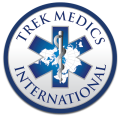AT-A-GLANCE
DIAL 112 or 144 TO CALL AN AMBULANCE IN AUSTRIA
- Majority of ambulance services in Austria are provided by Austrian Red Cross – responded to 2.9 million requests in 2014 [Source: ÖRK]
- Ambulance staff include physicians and/or paramedics who can be paid or volunteer
- EMS strategies vary according to geography and state:
- In urban areas, a “load and go” strategy is predominant due to short transport times to hospitals; Mean Transport duration time: 13min (8min in Vienna)
- In rural areas, the strategy is more focused on “Stay and Play” as most patients are stabilized on-scene with secondary transport possible if specialist care required; Mean transport 35min by ground
HOW CAN I CALL AN AMBULANCE IN AUSTRIA?
DIAL 112 TO CALL AN AMBULANCE IN AUSTRIA
Yes.
Historically, these emergency numbers were used in Austria:
- Dial 122 for Fire Department (“Feuerwehr”)
- Dial 133 for Police (“Polizei”)
- Dial 144 for EMS (“Rettungsdienst”)
- Dial 140 for Mountain Rescue (“Bergrettung”)
Today 112 is available across Austria as a unified number for all emergency services. There are multiple public and private ambulance providers in Austria.
GROUND AMBULANCE IN AUSTRIA
- Wiener Rettung – Vienna EMS
- Municipal emergency medical service funded and managed the Vienna city board since 1938 with 12 stations throughout the city, utilizing NAW & NEF response vehicles
- Austrian Red Cross
- In 2003, the Austrian Red Cross had 427 EMS stations providing 24/7 services with close to 2,000 ambulances
- 108 of the stations were doctor-staffed (72 NAW, 53 NEF)
- Majority of EMTs are volunteer and at basic level (<10% professional)
- Arbeitersamariterbund (ASB)
- 36 stations in Austria with the majority providing volunteer EMT-staffed ambulances only
- Johanniter
- Malteser
AIR AMBULANCE IN AUSTRIA
Yes. An ambulance in Austria may be staffed by physicians and/or emergency medical technicians with basic and advanced training and supplies.
Lay providers – Non-physician emergency medical technicians (EMTs) who provide care for minor emergencies. They can be both professional or volunteer and have basic or advanced training
- Rettungssanitäter – EMTs with 260 hours of basic life support (BLS) training
- Notfallsanitäter – EMTs with 480 additional hours of advanced life support (ALS) training; can work in support of ambulance physicians or independently
- Zivildiener – Equivalent of an ambulance attendant or orderly
Notarzt – Board-certified doctors who respond to major emergencies; typically come from neurology, anesthesiology, obstetric or pediatric specialties, and have at least 3 years of postgraduate training.
Helicopter EMS Staff
- HEMS physicians are required to have 4 years of ground experience, and most are specialists in anaesthesia, critical care, trauma or internal medicine.
- HEMS paramedics are all certified at advanced level
When you call 112 or 144, a dispatch who is responsible for coordinating transport and care will take your information and determine the appropriate mode of transport, either:
- Physician-staffed ambulance/helicopter
- Paramedic-staffed ambulance for first aid and transport
- Transport car to bring patient to hospital
- General practitioner to visit patient at home
There are several types of designations given to an ambulance in Austria:
PHYSICIAN-STAFFED AMBULANCES
- Notarztwagen (NAW): Used most frequently in urban areas; carries advanced life support and advanced trauma life support equipment and supplies; provides direct transportation and extended monitoring of emergency patients to hospitals
- Notarzteinsatzfahrzeug (NEF): Used most frequently in rural areas as a ‘rendezvous system’ to reduces response times and get a doctor on-scene to start providing treatment while ambulance is en route; carries ALS equipment but has limited monitoring options. When patient transport is required, the NEF is staffed by a paramedic-staffed ambulance to provide care en route though the doctor will join team in serious cases
EMT-/AEMT-STAFFED AMBULANCES – These are the majority of vehicles in Austria, particularly in Austria, and are used to provide prehospital treatment of minor injuries/diseases
GROUND AMBULANCE IN AUSTRIA
AIR AMBULANCE IN AUSTRIA
Notarzthubschrauber (NAH): A physician-staffed helicopter carrying ALS/ATLS equipment and supplies; provides extended monitoring options and used to provide rapid/smooth transportation over large distances. The NAH is predominantly used in rural areas for trauma patients, though also used for inter-hospital transport of critically ill and seriously injured patients. The Austrian Helicopter EMS system was originally organized by Ministry of Interior with private institutions, but in 2001 it was privatized, provided by Austrian Automobile and Touring Association (ÖAMTC), based in 15 stations with 24 helicopters statewide.
Most funding for Austrian EMS comes from:
- Fees for services paid by regional social insurances
- Contributions from states
- National government (partly)
- Donations
All organizations, except Vienna EMS, are dependant on volunteer work.
ADDITIONAL INFO
Common Emergencies in Austria
- Avalanches
Vaccinations for Austria
According to the US Centers for Disease Control and Prevention (CDC), different groups of travelers will require different vaccinations for travel in Austria:
- All Travelers
- Measles-mumps-rubella (MMR) vaccine
- Diphtheria-tetanus-pertussis vaccine
- Varicella (chickenpox) vaccine
- Polio vaccine
- Your yearly flu shot
- Some Travelers
- Hepatitis A
- Hepatitis B
- Rabies
Read more about travel in Austria at the CDC website: https://wwwnc.cdc.gov/travel/destinations/traveler/none/china (Last accessed: Aug. 7, 2017)
1881 – Wiener Rettung is established in Vienna; oldest known ambulance service in Europe
1970s – EMS model utilizing physician-staffed ambulances begins “in rural areas where rescue times were unacceptably long” (Weninger, 250)
1987 – Austrian Society for Emergency and Disaster Medicine (ÖNK) is founded, a non-profit organization that begins to coordinate prehospital medicine in a more formal fashion, providing education and training to physicians, paramedics and nursing staff in emergency medical systems across the country; also coordinates research activities in prehospital medicine. Later that year ÖNK collaborates with Austrian Medical Association to develop criteria for education and training of emergency physicians
1998 – Curriculum becomes national law
2002 – “Sanitätergesetz” (health standards) are introduced to provide uniform training and education for EMTs leading to “a more sophisticated level” of care provided by non-physician prehospital providers (Weninger 2005)
- Figl M et al: “Jaromir Baron von Mundy–founder of the Vienna ambulance service.” Resuscitation. 2005;66(2):121-5.
- Nürnberger A et al: “Out of hospital cardiac arrest in Vienna: incidence and outcome.” Resuscitation. 2013;84(1):42-7.
- Oberscheider M et al: “Analysis of the impact of different service levels on the workload of an ambulance service provider.” BMC Health Services Research. 2016;16:487.
- Prause G et al: “The Medizinercorps Graz: a 120-year-old institution of emergency medicine.” Prehospital Emergency Care. 2013;17(3):416-20.
- Wenniger P, Hertz H, Mauritz W: “International EMS: Austria.” Resuscitation 2005;65:249-54.
- Austrian Red Cross (Österreichisches Rotes Kreuz) –
- Austrian Resuscitation Council (ARC) – An interdisciplinary overhead organization that provides special resuscitation training for active emergency physicians
SCOREBOARD
% OF SERIOUSLY INJURED TRANSPORTED BY AMBULANCE, 2013
[Source: 2013 Global Status Report on Road Safety, WHO]
ROAD TRAFFIC INJURY DEATHS, 2015
(PER 100,000 POPULATION)
[Source: 2015 Global Status Report on Road Safety, WHO]
REPORTED HOMICIDES, 2012
(PER 100,000 POPULATION)
[Source: 2014 Global Status Report on Violence Prevention, WHO-UNDP]




